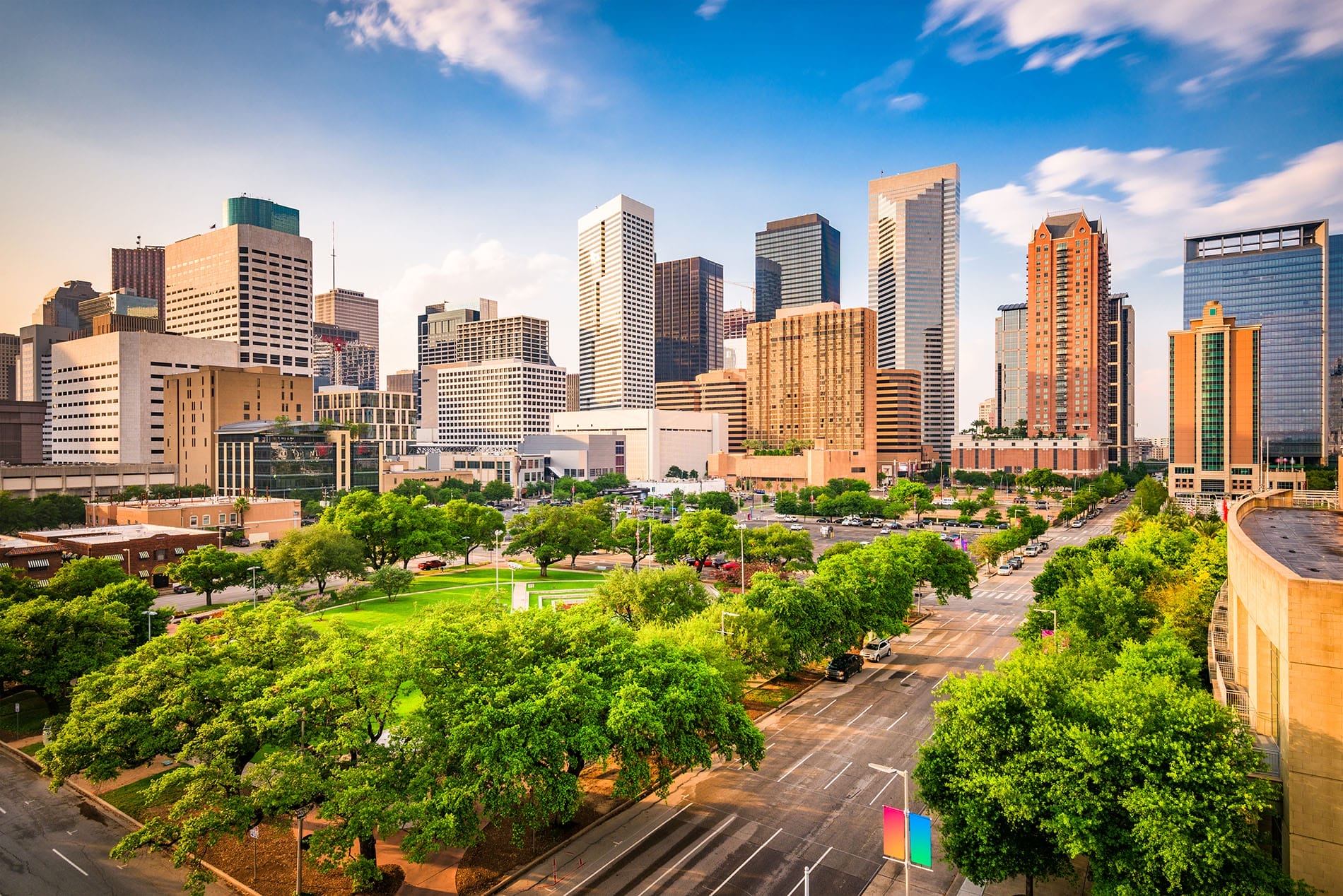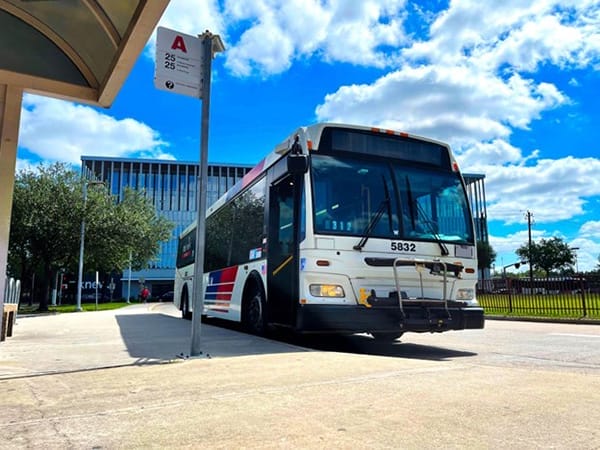Considering a move to Houston, Texas? If so, you’re in the right place to learn what you need to know before you pack your bags.
From the city’s diverse neighborhoods and suburbs to the cost of living and job market, it’s essential to understand what to expect before moving. In this moving guide to Houston, Texas, we’ll explore all these aspects and more to help you make an informed decision before moving to the largest city in the Lone Star State.
How Does Houston’s Cost of Living Compare to Other Major Cities?
One of the first considerations when moving to Texas (or any place) is the cost of living. This will give you an idea of how far your money will go in a particular area. If you have a remote job, you can use this information to decide if this will allow your income to stretch further or if it’ll put a strain on your budget.
You can also use this info if you’re considering relocating to Houston for a new job. You can compare Houston’s cost of living index and income against your current city. If the cost of living and your salary match or improve with the relocation, it’s a worthwhile move.
Houston Cost of Living vs. Other U.S. Cities
Fortunately, Houston has a lower cost of living than many other major cities in Texas and the United States, making it an attractive destination. For example, Houston’s cost of living is a whopping 36.91% cheaper than Los Angeles, 17.8% lower than Chicago, and 8.45% cheaper than Detroit, Michigan.
Compared to the United States as a whole, Houston is below average in terms of cost of living. On a scale of 0 to 100, with 100 being the average cost of living in the U.S., Houston scores 96.9 — meaning cheaper than the average cost of living in the country.
Houston Cost of Living vs. Other Texas Cities
What about Houston’s cost of living compared to other major cities in Texas? It beats them too, ringing in 5.52% lower than Austin, Texas, 8.54% lower than Dallas, and about even against Fort Worth. The only larger city that’s cheaper than Houston is San Antonio, which Houston is 1.84% more expensive to live in.
The cost of living covers a massive range of everything from the bare necessities to entertainment, nightlife, and other activities. On the same 0 to 100 scale, let’s review some of these key category costs to help you get a better grasp on where your money will go in Houston:
- Groceries: 98.1
- Healthcare: 95.1
- Housing: 75.4
- Utilities: 96.5
- Transportation: 119
- Miscellaneous: 105.9
How to Calculate Your Income and Cost of Living as a Moving Guide to Houston, Texas
Using a cost-of-living comparison calculator, select the city you’re moving from and the city you’re moving to. For this example, let’s say you’re considering a move from Brooklyn in New York City to Houston, Texas. According to the calculator, Houston has a 42.03% lower cost of living.
Now, you simply subtract that 42.03% from your current salary in Brooklyn. Let’s say you earn $100,000 annually; subtract 42.03% from that, and you get $57,970. This means the average person would need a job in Houston, Texas paying at least $57,970 to maintain their existing lifestyle.
Remember that your experience will vary, as each expense category impacts the cost of living individually. For example, prescription drugs are 21% more expensive in Houston than in Brooklyn, so relying on several prescriptions every month could affect how far your income will go in Houston.
Another variable to consider with your income in Houston is that the Lone Star State is one of the few not to levy state income taxes. This means you’ll likely take home more of your paycheck than in most other states.
Enter your ZIP Code and compare electricity rates
What’s the Job Market Like in Houston?
When it comes to the job market, Houston has a diverse economy driven by a variety of industries, including energy, healthcare, aerospace, education, technology, and telecommunications. Researching the job market and understanding which industries dominate can help you plan your career prospects in the city.
In late 2020, Houston, like many areas, went through a significant job shrinkage of around 6%. However, as of October 2023, the Houston metro area has seen its non-farm employment increase by 76,000+ jobs in the preceding 12 months. Currently, the Houston area is enjoying 2.3% job growth — 0.4 percentage points higher than the national average.
What industries offer the most significant job growth in the Houston area? Healthcare is a particularly prominent industry with the presence of the Texas Medical Center, the largest medical complex in the world.
That said, you have plenty to choose from, as most sectors grew year over year:
- Education and health services: ~5.6%
- Trade, transportation, and utilities: ~3.2%
- Professional and business services: ~1.7%
- Manufacturing: ~3.5%
- Leisure and hospitality: ~2.0%
- Financial: ~2.9%
- Mining and logging: ~4.8%
The only industry with significant shrinkage is construction at roughly -11%.
What Are Some Houston Area Neighborhoods and Suburbs to Consider?
Houston spans 665 square miles but Downtown Houston isn’t the only option. The Greater Houston–The Woodlands–Sugar Land metro area is vast, covering 9,444 square miles of diverse suburbs and neighborhoods. There are upscale areas like River Oaks and West University to the more culturally diverse communities of Montrose and Midtown. No matter your preference, there’s something for everyone in Houston.
Let’s kick things off with River Oaks, one of the most exclusive and expensive Houston neighborhoods. River Oaks is known for its mansions and tree-lined streets. This neighborhood also boasts beautiful parks, such as the stunning Buffalo Bayou Park, which offers scenic trails, public art, native landscaping, and city skyline views.
West University Place, located near Rice University, is another upscale neighborhood that attracts affluent residents. This charming community’s real estate has an average home price of nearly $1.6 million with top-rated schools, making it a popular choice for high-income families.
Montrose is a vibrant and culturally diverse neighborhood and tends to attract artists and musicians. Known as the “heart of Houston,” Montrose boasts an eclectic mix of restaurants, art galleries, and boutiques. One of the shining stars of Montrose is the Menil Collection, a world-class art museum with a collection of modern and contemporary art.
Midtown, located just south of Downtown Houston, puts you near the city center without too much hustle and bustle. It’s a dynamic neighborhood that boasts a lively nightlife scene and diverse dining options. Midtown is popular among young professionals and offers many housing options, such as high-rise apartments and condos, trendy lofts, and historic homes. Midtown is also known for having several parks and green spaces, breaking up the urban feel and providing opportunities for outdoor recreation.
The Woodlands stands out if you’re seeking a family-friendly suburban community with a strong emphasis on nature and outdoor activities. This master-planned community offers 191 parks, 220 miles of hiking and biking trails, seven golf courses, and much more, making it a haven for outdoor and nature lovers. The Woodlands also has superb schools and plenty of shopping and dining options to fit anyone’s needs.
What’s the Climate in Houston, and How Should Newcomers Prepare?
As an incoming Houstonian, you’ll want to know all about the weather in the area.
Houston experiences a humid subtropical climate that ranges from hot and humid summers to cool winters. Temperatures generally range from 47 to 95 degrees Fahrenheit, and you’ll rarely see a day when temperatures fall below 35 degrees or over 100 degrees.
Summers can become scorching and very muggy, which can be oppressive to unsuspecting and unprepared newcomers. Invest in cool, breathable clothing and ensure the home you choose has up-to-date insulation and climate control to ensure optimal energy savings.
Winters in Houston are relatively mild, with temperatures rarely dropping below freezing. That’s not to say it never gets cold, as occasional cold fronts can send temperatures plummeting. Because of the threat of the occasional cold snap, it’s wise to have some warmer clothing on hand.
Houston also experiences heavy rainfall at times, especially during hurricane season, so it’s important to stay informed on the weather and be prepared for potential storms.
The most comfortable months are from late January through mid-May and early October through mid-December. These are the times when it’s comfortable to warm outside with relatively low humidity.
What Transportation Options Are Available in Houston?
Houston has a well-developed transportation system, whether you prefer to drive yourself or take public transit. The city has the crossroads of Interstate 10 and 45, plus it has numerous other highways to ease commuting, including Interstate 610, U.S. 59, U.S. 90, and U.S. 290.
Houston also uses high-tech equipment to help ease traffic congestion and other issues slowing commutes. This technology, known as TranStar, uses state-of-the-art tech to keep congestion to a minimum on major roadways. It features more than 730 regional closed-circuit cameras that allow the system to dispatch vehicles to remove debris, communicate with emergency vehicles about accidents, and send tow trucks to rescue stalled vehicles.
On top of vast highways and high-tech traffic-control systems, Houston has a public transit system called METRO. This network includes over 1,200 buses and park-and-ride facilities. It also has METRORail, which is a light rail system. The 23-mile light rail system connects Downtown Houston with various neighborhoods and suburbs, giving residents an efficient and convenient public transportation option.
What Cultural and Recreational Attractions Can Houston Residents Enjoy?
Houston, the fourth largest city in America by population, is a diverse city with a vibrant cultural scene and plenty of attractions for residents to enjoy. This big city houses various museums, including the Museum of Fine Arts, Contemporary Arts Museum Houston, and Houston Museum of Natural Science. These museums offer residents and visitors rich cultural experiences and the opportunity to explore art, history, and science in one area.
If you’re outdoorsy, Houston has no shortage of parks, trails, and green spaces. Memorial Park, Hermann Park, and Buffalo Bayou Park are among some of the city’s popular outdoor destinations, offering plenty of space and facilities for jogging, picnicking, and enjoying nature.
Houston is well-known for having a thriving and diverse food scene. Its culinary offerings range from the classic Tex-Mex and BBQ to international food from around the globe. Houston is also home to world-class museums, such as the Museum of Fine Arts.
For outdoor enthusiasts, Houston offers numerous parks and green spaces. The city’s mild climate allows for year-round outdoor activities, such as hiking, biking, and picnicking. Buffalo Bayou Park, Memorial Park, and Hermann Park are just a few examples of the many parks where you can escape the hustle and bustle of city life.
On top of culture, nature, and cuisine, the city of Houston is also a sports fan haven. The city is home to three big-league professional teams, including Major League Baseball’s Houston Astros, the NFL’s Houston Texans, and the NBA’s Houston Rockets.
For more details, don’t miss this guide on the top attractions of Houston.
Bookmark This Moving Guide to Houston, Texas
With this moving guide to Houston, Texas, you’ll have a great starting point to begin your research on the area. The cost of living relative to your income is a big consideration, so you’ll want to review that carefully along with school districts, attractions, and activities. An in-person visit is always ideal as there’s nothing like actually being there to get a sense of the area and feel the energy.
Once you’re ready to make the move, be sure to determine your home energy usage to keep your electricity bills down and your comfort level up.
Brought to you by energysavings.com
All images licensed from Adobe Stock.





